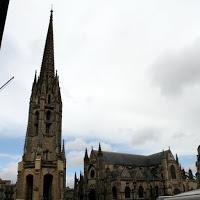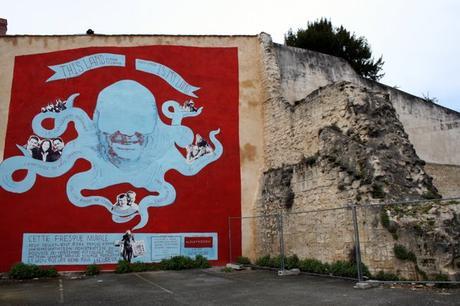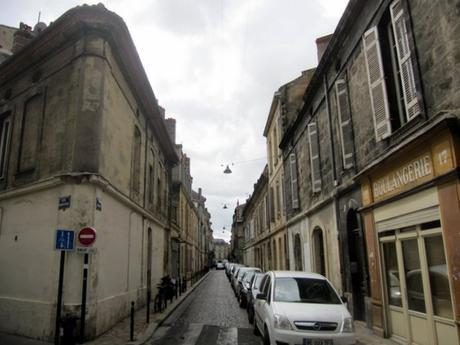 In this, the latest of an occasional series of guest posts, fellow Brit and Bordeaux Expats midfield lynchpin Chris Tighe gets under the skin of the Saint-Michel district and some of its street names.
In this, the latest of an occasional series of guest posts, fellow Brit and Bordeaux Expats midfield lynchpin Chris Tighe gets under the skin of the Saint-Michel district and some of its street names.The Saint-Michel neighbourhood is on the verge of a triumphant rebirth, the next in the long list of rejuvenation programs in Bordeaux's city center. The Saint-Michel renovation project was initiated in 2007 and the ambitious programme is finally starting to see the light of day. What does it all involve?
According to the Préfet de la région d'Aquitaine's direction régionale de l'environnement de l'aménagement et du logement (DREAL), the plan aims to:
- Restore an 'emblematic' Bordeaux space within context of UNESCO and the Santiago de Compstela pilgrimage.
- Reintegrate the area into the framework of the historical center as a crossroads between the Saint-Croix and Saint-Pierre districts.
- Sustain the size of the market while allowing a wide range of other businesses to operate.
- Create peaceful public meeting places and reduce the impact of cars.
- Re-establish Saint-Michel church as a heritage site.
- Create an “urban gateway” from the Capucins.
Saint-Michel was first integrated into Bordeaux city in the 14th century as the fortifications were extended to include “faubourg” districts, which also included Sainte-Croix and Sainte-Eulalie. No doubt this was a result of the increased urban population which had started to swell beyond the city limits and was the first attempted “clean up” of the area! The new outer walls were expanded out to Rue Peyronnet and Rue des Douves (Moat street) – parts of which can still be seen from the tram as well as in the Jardin des Douves in the ancient grounds of the Capucins convent, where it is possible to make out the artillery posts of the old 15th century ramparts as well as abandoned bits of staircases.

Remnants of the old city walls.
At this time the ‘frontier’ of the Cours Victor Hugo was an actual physical barrier; a giant ditch, le Fossé des Salinières, ran past the Grosse Cloche. It not only sought to protect the inner bastion of the city but also served as an open sewer and rubbish dump for the nearby markets and butchers. Indeed, the original Marché Victor Hugo was known as the Marché des Fosses even within living memory.To have a brief glimpse of the “lost” city walls, get over to 51 - 63 cours Victor Hugo - remnants of the remparts are visible through the railings. Interestingly, they display a large range of mixed stones from throughout the Atlantic coast e.g. Brittany, northern Europe and the Baltic, brought to Bordeaux on merchant ships which would use large stones as ballast when sailing into the city (wine barrels made up the weight on the return journey...).

A typically compact street in the Saint-Michel district.
Under English rule, Bordeaux had a monopoly on the wine trade with England and therefore northern Europe (until 1453 when it was trade with England was banned by Charles VII), which fueled international trade in the port. The rising trade created a wide range of maritime-related local industries. Few records survive from the later medieval period but remaining street names (the road layout has changed somewhat!) give us tantalizing hints as to daily life in the district. Local toponymy demonstrates that St Michel was traditionally a hive for local artisans – wood from the Quercy, Rouergue or Gascony was brought in on the flat bottom “Gabare” boats and sold to the various local tradesmen…- Rue des Bouviers is named after the stables in the area to house the cows which worked in teams to haul the merchandise up the banks of the Garonne to be sold to the variety of local port-related industries.
- Rue Carpenteyre (Carpenters street) was renowned for its numerous carpenters workshops – a couple of medieval houses still remain at no.31 (16th century) and no.35, which is a perfect preservation of an artisan ‘shop’ with the above residence.ue de la Fusterie from the French ‘fustier’ or ‘fûtier’ indicates the presence of tradesmen involved in different types of woodwork – barrel makers, turners, joiners, boat construction, etc.
- Rue des Faures (or Arrua deus Faures in Gascon) signifies various forms of iron work (forgerons). Bordeaux was apparently internationally reputed in the medieval era for weapons, specializing in highly sought after bayonets (originating from Bayonne) lances, swords and body armor.
This Saint Mich' Le Blog video offers an unusual take on Saint-Michel: Click here if video does not display properly on your device.
- Big thanks Chris for supplying this item!
